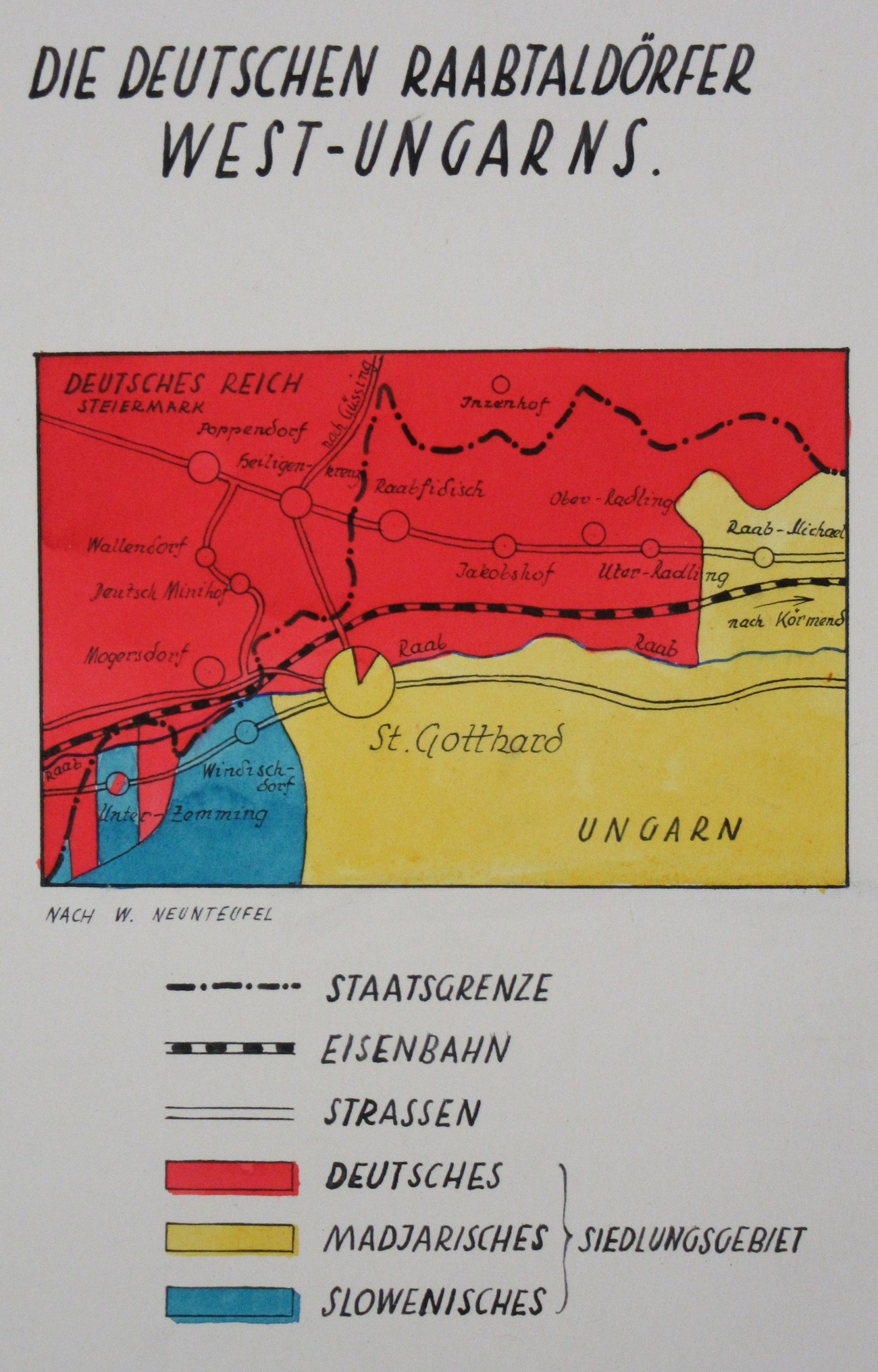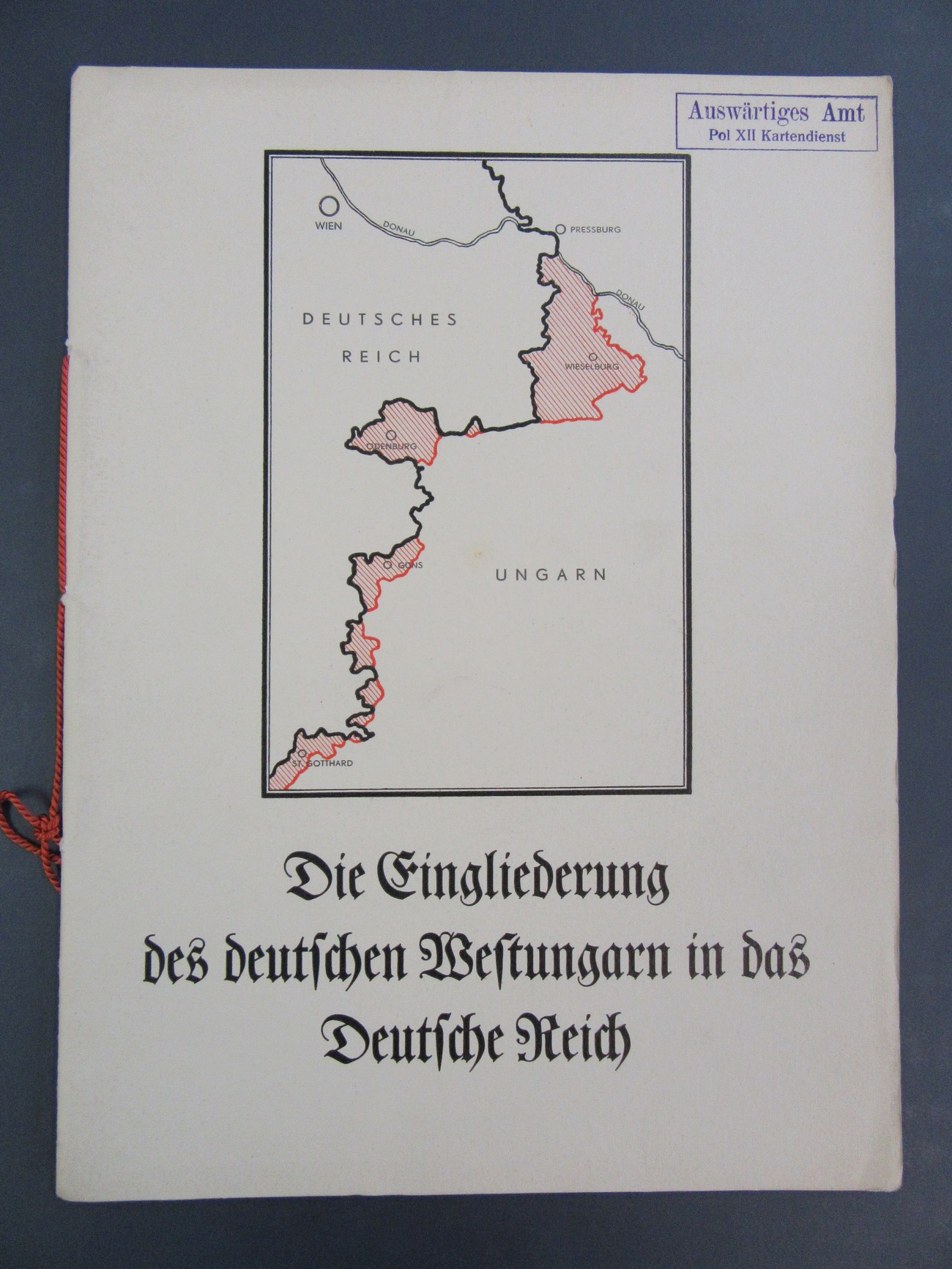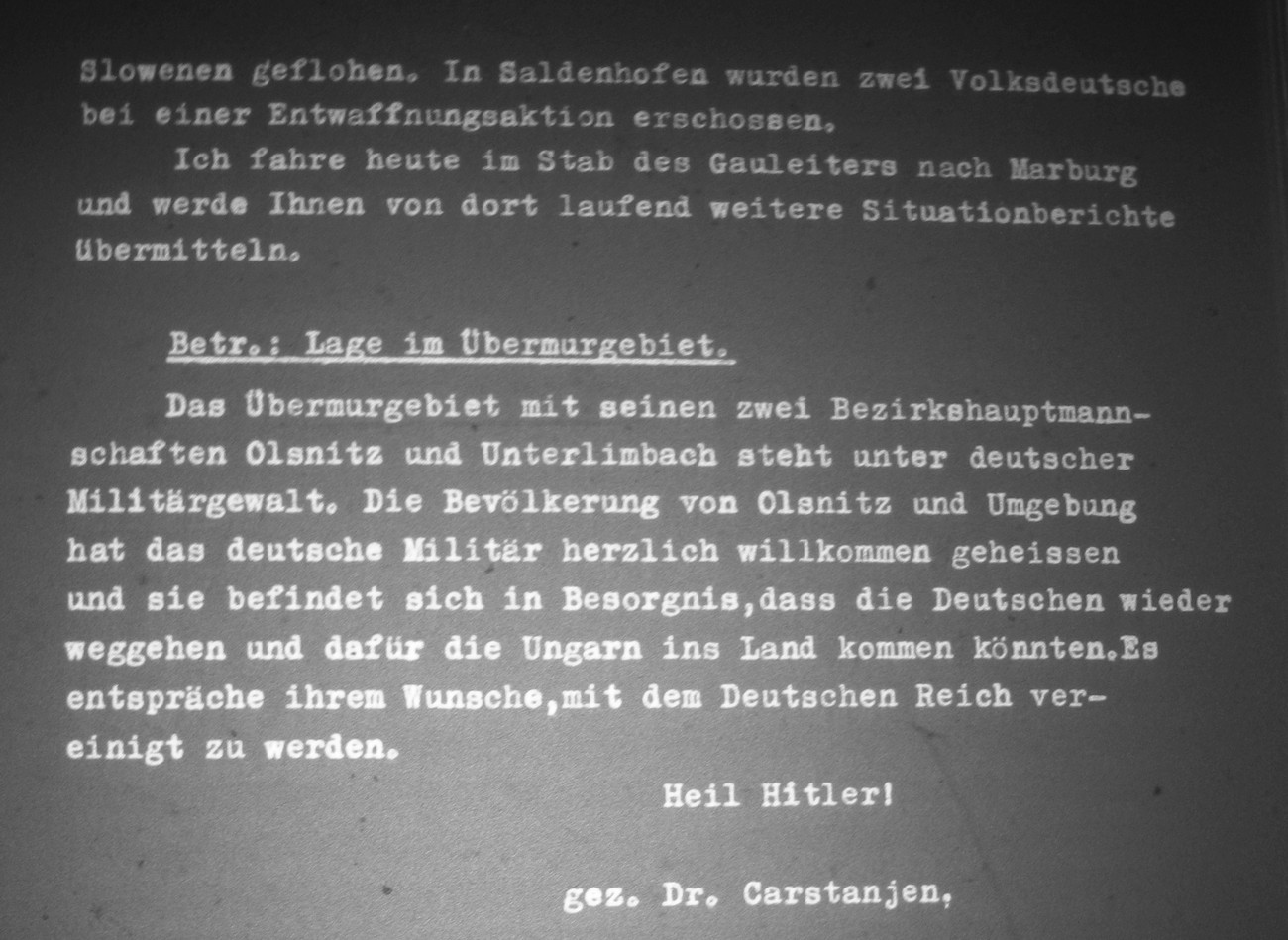»Prekmurje and Međimurje. Prekmurje and the area between the Mura and Drava river joins Hungary in the historical border. In the future, the emigration of Germans living in the northwestern part will be taken into account.« (Hitler's guidelines for the partition of Slovenia on April 3 and 12, 1941. In: Metka Fujs, Osvoboditev ali okupacija, Madžari, Vendi ali Slovenci. Regional Museum of Murska Sobota. Permanent exhibition. Murska Sobota, 1997, 297-298).
Germany intended to redefine the border with Hungary based on the Treaty of Saint-Germain-en-Laye (1919) and its voidness after the Anschlus (1938). Both Prekmurje and Porabje were included in these plans. In a broader sense, it was a rearrangement of southeastern Europe (die Neuordnung Südosteuropas) that would give the Reich an area important for the supply of Vienna and other Austrian industrial areas (Ostmärkische Industriegebiete). In addition to numerous studies, maps and other materials before the outbreak of war, the plans were implied by the establishment of local groups of the Swabian- German Cultural Association (Schwäbich-Deutscher Kulturbund) in Prekmurje. These were founded in German villages as well as in Murska Sobota and Doljna Lendava, which was presumed to be undisputably Hungarian. Studies, which were made in the months before the invasion by dr. Helmut Carstanjen (the chief ideologue behind the Germanization of Styria and Prekmurje) and his Südostdeutsches Institut in Graz, and the memoranda for the Foreign Ministry in Berlin based on them, demanded the division of Prekmurje between Hungary and Germany. The secret plans concerning Porabje were published in the booklet called The Inclusion of the German Part of Western Hungary to the Reich. It introduced German colonization in Hungary as a continuous and territorially completed »chain of German villages and towns from the Danube to the Mura river; from Bratislava to Monošter.« The Germans in Železna županija (Eisenburg) mostly lived in the area of Kőszega (Güns) with its surrounding area; in the valleys of the Pinka (Pinkataal) creek; and the river Raba with Monošter (Raabtalgemeinde mit St. Gotthard). When Hungary became a member of the Tripartite Pact, plans changed, and Hitler gave up Prekmurje and Medžimurje.



